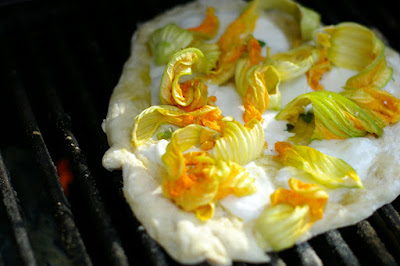One Local Summer Week 12
Our harvests are getting bigger and bigger ever week. My impatience at the beginning of the summer has turned into desperation to find a new way to use up all our fresh food! Luckily we have great neighbors to share with and a huge freezer to fill up. Fortunately, our tomatoes are still surviving and today I picked about 12 pounds of tomatoes, just in time for my first venture in canning.
As for ways to use up the harvest, I do have a few tricks left for that. Growing up in an Italian family with a huge garden, I was used to spending the summer enjoying special foods that only came once a year. There were certain foods in our house that were never brought home from the grocery store, especially out of season. Somehow has a kid, I never did like tomatoes, even the home grown ones, or squash. One of the few ways I would actually eat any vegetables was in my mom's giambrot'. (Pronounced: jom-braut) Giambrot' is one of those family recipes you can never find in a cookbook, most likely because the name we call it is most likely some sort of dialect, which would make it hard to look up in a proper cookbook. After taking some Italian in college and learning how to read and write the language, I have some ideas of where the word may actually come from. Probably something to Google some day soon... Most people when they taste it, or here it described would exclaim, "Oh, right, like ratatouille!" Ok, well probably, in some form...but I don't suggest you mention that to too many proud Italians ready to serve you some homemade, fresh from the garden giambrot'!
Giambrot'
1 eggplant, peeled and cubed
1 zucchini, cubed
1 clove garlic, smashed
1 bell or cubanelle pepper, diced
1 hot pepper, diced (more or less to your liking)
chopped tomatoes (add as needed)
olive oil
salt and pepper
The great thing about this recipe is that it can be adjusted to your liking, and to what you have on hand. Many times I use green beans, or I may omit eggplant when they aren't available yet.
In a small saucepan, warm 2 Tablespoons olive oil and the garlic over medium heat. When the garlic begins to sizzle, add the peppers. Cook until they begin to soften. Add the eggplant, and stir to coat all the eggplant. Allow to cook together for about 5 minutes, adjusting the heat so the eggplant does not brown. Add the zucchini and stir. Add the tomatoes and stir. You can add as many tomatoes as you wish, depending on how thick you would like your giambrot'. Taste for seasoning and add salt and pepper as necessary. Allow the vegetables to simmer until they are cooked to your liking, I never like mine too mushy! Serve alongside your main dish, with fresh basil and drizzled with olive oil.











































